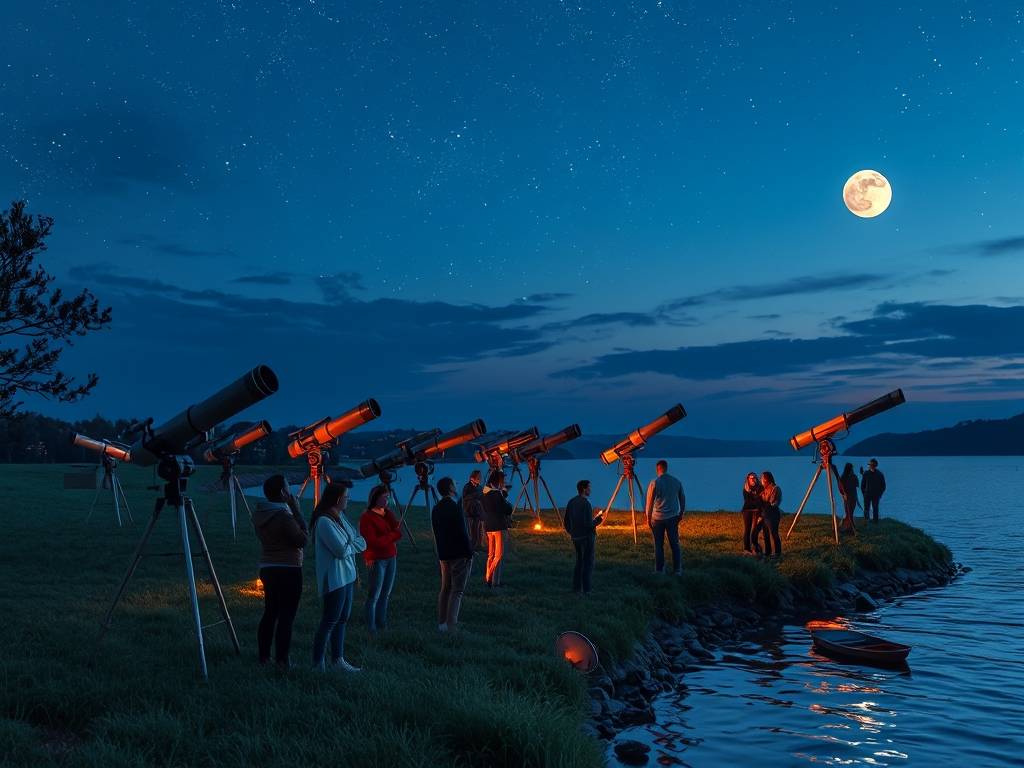Global Travel Information
Elbe River Compasses: Stay Oriented on Hikes
The Elbe River's Guiding Hand: Your Trusted Compass for Unforgettable Hikes
There's a special kind of magic to hiking along the Elbe River. From the dramatic sandstone cliffs of Saxon Switzerland in Germany to the serene, vineyard-dotted slopes of the Czech Republic, the Elbe River Trail offers a breathtaking journey through the heart of Europe. Yet, even on a well-marked path like this, the whisper of uncertainty can sometimes creep in. A fork in the trail not on your map, a sudden bank of fog rolling in, or the simple, soulful desire to leave the beaten track and find a secluded riverbank spot—these are the moments when your most reliable friend isn't your phone, but a timeless tool: your hiking compass. More specifically, your understanding of how to use an Elbe River compass for hiking orientation becomes the key to confidence and freedom.
Many modern adventurers rely solely on digital maps and GPS, and while these are fantastic tools, they have a critical weakness: they depend on battery power and a clear signal. Embracing traditional navigation techniques for the Elbe River region isn't about rejecting technology; it's about building a foundation of safety that never fails. This guide is designed to be your comprehensive resource, ensuring you stay oriented, safe, and deeply connected to the landscape on your Elbe adventure.

Why a Compass is Your Essential Elbe Hiking Partner
The Elbe River itself is a colossal natural compass, flowing roughly from southeast to northwest. This is your primary reference point, a constant guide that has directed travelers for centuries. However, the trail often meanders away from the riverbank, climbing into forests, skirting through meadows, and weaving through charming villages. This is where your reliable compass for Central European trails proves its worth.
Imagine this scenario: You're deep in the woodlands of the Elbe Sandstone Mountains, captivated by the ancient trees. You consult your phone for a location check, only to find the battery has drained unexpectedly. Without a physical map and compass, that feeling of wonder can quickly turn to anxiety. With them, however, you simply take a bearing, correlate it with your topographic map, and calmly continue your journey. This skill transforms your hike from a simple stroll into a true expedition, empowering you with self-sufficient hiking navigation skills that are invaluable for any long-distance hiking preparation.
Choosing the Right Compass for the Elbe River Trail
Not all compasses are created equal, and selecting the right one is your first step toward confident navigation. For the Elbe River hiker, the ideal choice is a baseplate compass, often referred to as an orienteering compass.
Here’s what to look for in your best hiking compass for European river valleys:
- Clear Baseplate with Map Scales: This allows you to take bearings directly on your map. The scales help you measure distances on your topographic map.
- Liquid-Filled Capsule: The liquid dampens the movement of the needle, allowing it to settle quickly and steadily, rather than jittering endlessly.
- Rotatable Bezel (Azimuth Ring): This is the ring marked with 0 to 360 degrees. You'll use this to set and follow bearings.
- Orienting Lines and Arrow: Inside the capsule, these lines are used to align the compass with the north-south lines on your map.
- Index Line: A fixed mark at the top of the bezel where you read your bearing.
- Declination Adjustment: This is a crucial feature for accurate compass use in Germany and Czechia. Magnetic north (where your compass points) and true north (the North Pole on the map) are not the same. This difference is called magnetic declination. In the Elbe region, the declination is currently very small (only about 2-3 degrees east), but for precise wilderness navigation on the Elbe, it's a good habit to learn how to adjust for it. Some advanced compasses allow for a manual declination adjustment, saving you from having to do the math in your head.
The Art of Map and Compass: A Practical Guide for the Elbe Hiker
Now, let's integrate your tools. You'll need your trusted compass and a detailed topographic map of the Elbe River region. Topographic maps show the contour lines of the land, revealing hills, valleys, and slopes—essential information for planning your route.
1. Setting the Map: Your First and Easiest Orientation Before you even take a bearing, you can orient your map to the real world. Lay the map flat on the ground. Place your compass on it and rotate the map (not the compass) until the north-south lines on the map are parallel to the compass needle, and the map's "north" is pointing toward true north. Now, the features on the map—the river's bend, a hill, a village—will align with the landscape in front of you. This simple act of orienting a map with a compass provides an immediate and powerful spatial understanding.
2. Taking a Bearing from the Map (How to get to your next point) This is the core skill of route finding with a compass on the Elbe.
- Step A: Place your compass on the map so that the long edge of the baseplate creates a line from your current position (Point A) to your desired destination (Point B).
- Step B: Rotate the bezel until the orienting lines inside the capsule are parallel to the north-south lines on your map. Ensure the north-oriented arrow (not the compass needle) is pointing toward north on the map.
- Step C: Read the number at the index line. This is your bearing in degrees.
- Step D: Now, take the compass off the map. Hold it flat in front of you and rotate your entire body until the magnetic needle is "boxed" within the orienting arrow in the capsule (i.e., the needle aligns with the arrow). The direction-of-travel arrow on the baseplate now points precisely toward your destination.
3. Taking a Bearing from the Landscape (Figuring out where you are) If you're unsure of your location, but can identify a distant landmark (a distinct hilltop, a church spire), you can use it to find your position on the map.
- Step A: Hold the compass level and point the direction-of-travel arrow directly at the landmark.
- Step B: Rotate the bezel until the magnetic needle is "boxed" inside the orienting arrow.
- Step C: Now, place the compass on your map. Position one corner of the baseplate on the landmark you sighted, then rotate the entire compass (keeping the corner on the landmark) until the orienting lines are again parallel to the map's north-south lines. Draw a line along the baseplate's edge. You are located somewhere along this line. Repeat the process with a second landmark; where the two lines intersect is your approximate location—a technique known as triangulation.
Integrating the Elbe River into Your Navigation Strategy
The river is your constant guide. Use it to cross-check your compass work. If your compass tells you you're heading north, but the Elbe is on your left when you know it should be on your right, it's a clear sign to stop and reorient yourself. This practice of using natural landmarks with a compass is a hallmark of an experienced navigator. It creates a feedback loop between your tools and the environment, ensuring your Elbe River hiking orientation is always on point.
Advanced Tips for a Seamless Journey

- Pre-Plan Your Bearings: Before you set out, plot your key route segments on the map and write down the bearings in a notebook. This saves time and battery life on the trail.
- Practice in a Safe Environment: Don't wait until you're in a deep forest to use your compass for the first time. Practice in a local park to build muscle memory.
- The Power of Pacing: Learn your pace count—how many double-steps you take to cover 100 meters. Combined with a bearing, this allows you to navigate effectively even in low visibility.
- Respect the Weather: Dense fog or a sudden snowstorm can whiteout the landscape, making trails and landmarks disappear. In these conditions, your compass is your only reliable guide for safe hiking in Saxon Switzerland.
Mastering the Elbe River compass for hiking orientation is more than a safety measure; it's a passport to a deeper, more rewarding travel experience. It frees you to explore with assurance, to understand the lay of the land intimately, and to walk in the footsteps of the explorers who traversed these paths long before the digital age. So, pack your bag, fold your map, and clip your compass to your strap. The timeless landscapes of the Elbe are waiting, and now you have the timeless skill to explore them with complete confidence.
相关文章
- Elbe River Binoculars: Spot Wildlife from Afar
- Elbe River Telescopes: Stargaze by the Water
- Elbe River GPS Devices: Navigate the Area Easily
- Elbe River Walkie-Talkies: Stay Connected with Travel Buddies
- Elbe River Radios: Listen to News & Music
- Elbe River Books on Tape: Audiobooks for Long Walks
- Elbe River Music Playlists: Tunes for Your River Trip
- Elbe River Podcast Playlists: Listen While You Explore
- Elbe River Audiobooks: Stories to Enjoy Along the Way
- Elbe River Language Courses: Learn German During Your Trip
发表评论
评论列表
- 这篇文章还没有收到评论,赶紧来抢沙发吧~


